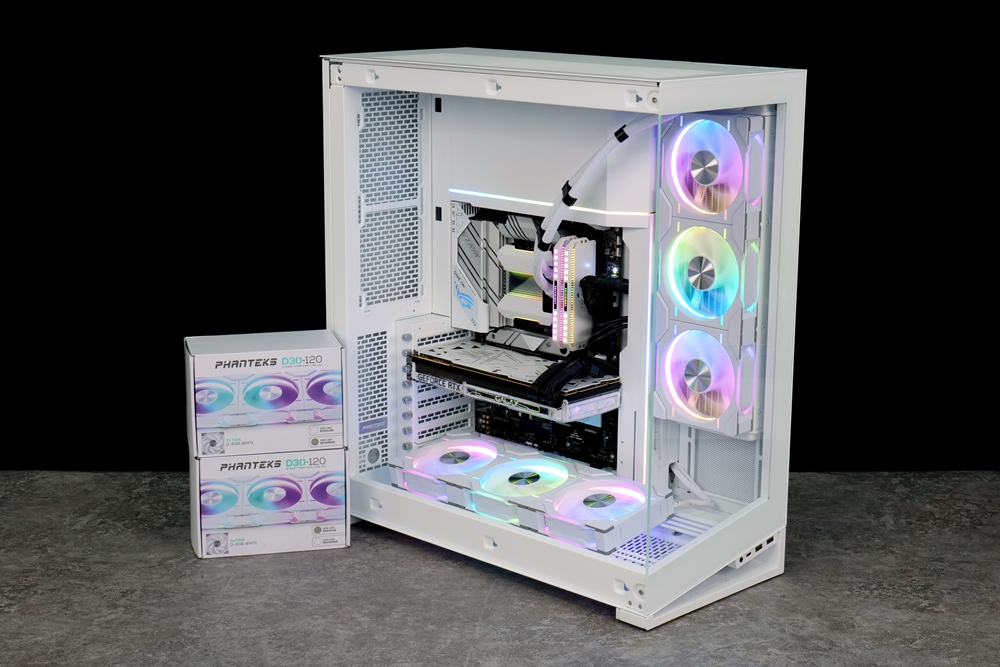
Not long ago, I presented the Phanteks M25 series fan, and recently a new addition to our product line, the D30-120 series fan, was introduced. This model follows the T30-120 series with its 30mm thickness. However, this time our focus wasn’t entirely on performance. Instead, we emphasized assembly convenience, aesthetic appeal, and versatility. We now offer two versions, a conventional fan blade, and a reverse fan blade, to more effectively cater to diverse installation requirements.
Specifications:
Size: 120 x 120 x 30 mm
Frame color: black, white
Number of blades: 7
blades Type of blades: regular blades, reverse blades
Fan speed: 250~2000 RPM
Maximum air flow: 64.3 CFM (conventional) , 61.5 CFM (Reverse)
Maximum wind pressure: 3.01 mmH2O (regular), 2.72 mmH2O (reverse)
Noise value: 30.2 db(A) (conventional), 31.8 db(A) (reverse)
Fan wire: 700 mm 4 -Pin PWM
DRGB wire: 600+100 mm 3-Pin JST Daisy-chain
Weight: 300g
Warranty: 3 years
30 mm thickness, forward blade/reverse blade dual version
This time, Phanteks has introduced the D30-120 fan which features light strips on the front side of the frame and includes their trademark Halos light ring integrated within. This design ensures that the overall lighting effect maintains Phanteks’ consistent style.
The D30-120 fan is available in black and white, and there are options for both conventional and reverse-blade fans. While it doesn’t offer detachable fan blades like some brands do for easy replacement, with some foresight during installation, this is essentially a non-issue.
Even though the D30-120 fan shares the same 30mm thickness as its predecessor, the T30-120 fan, its design, and positioning are different. When operating at the same 2000 rpm, the D30-120 fan manages to deliver comparable performance to the T30-120 fan while maintaining an impressive lighting effect and aesthetic appeal. Overall, the D30-120 fan strikes a good balance across various aspects.
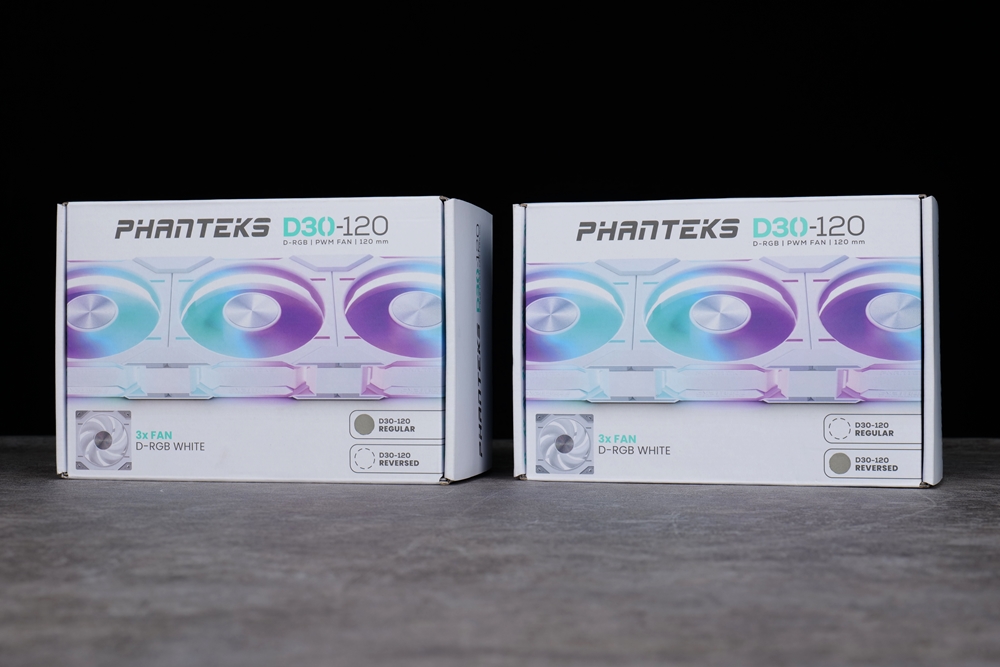
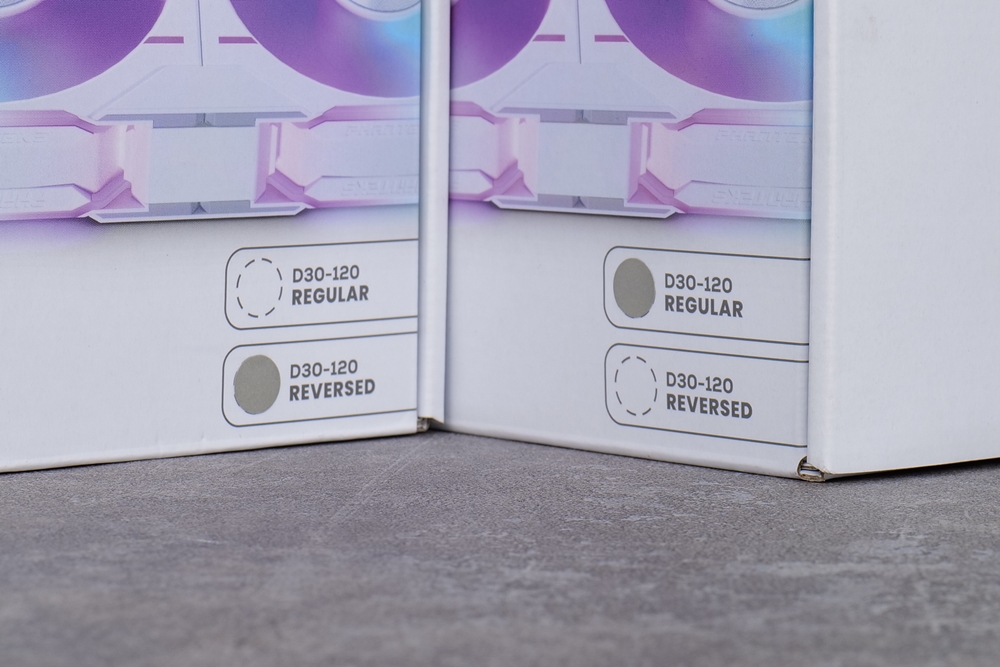
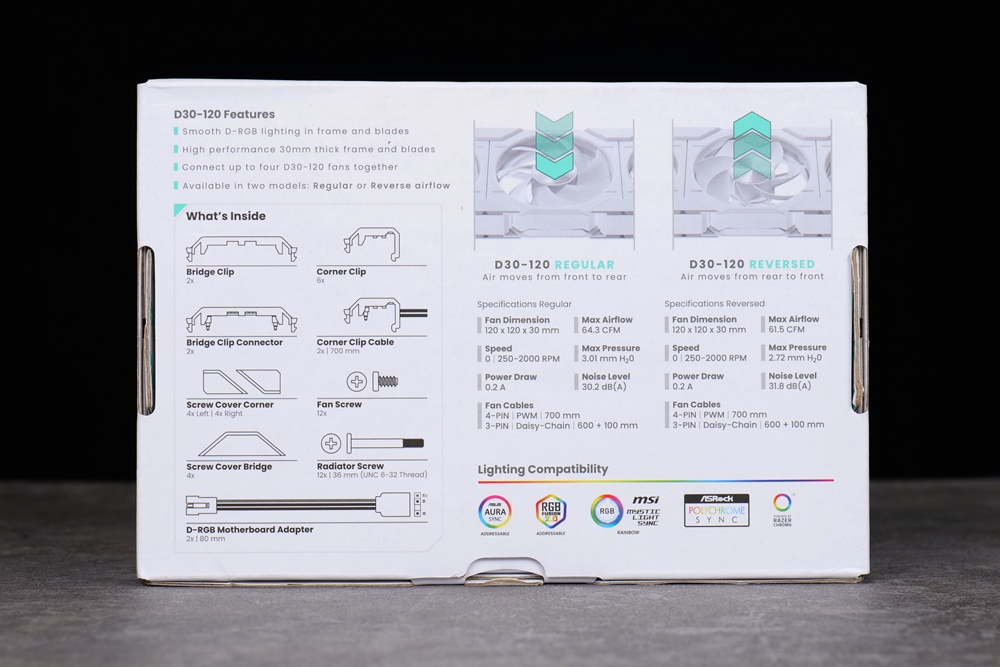
This time, both the conventional and reverse fan blades are available in sets of three, in white. Performance varies slightly between the two versions. The conventional fan blade version provides a maximum airflow of 64.3 CFM and a maximum air pressure of 3.01 mmH2O. The reverse fan blade version has slightly lesser performance, providing a maximum airflow of 61.5 CFM and a maximum air pressure of 2.72 mmH2O. If you’re planning to use it in conjunction with a radiator, the conventional fan blade version would be a more suitable choice.
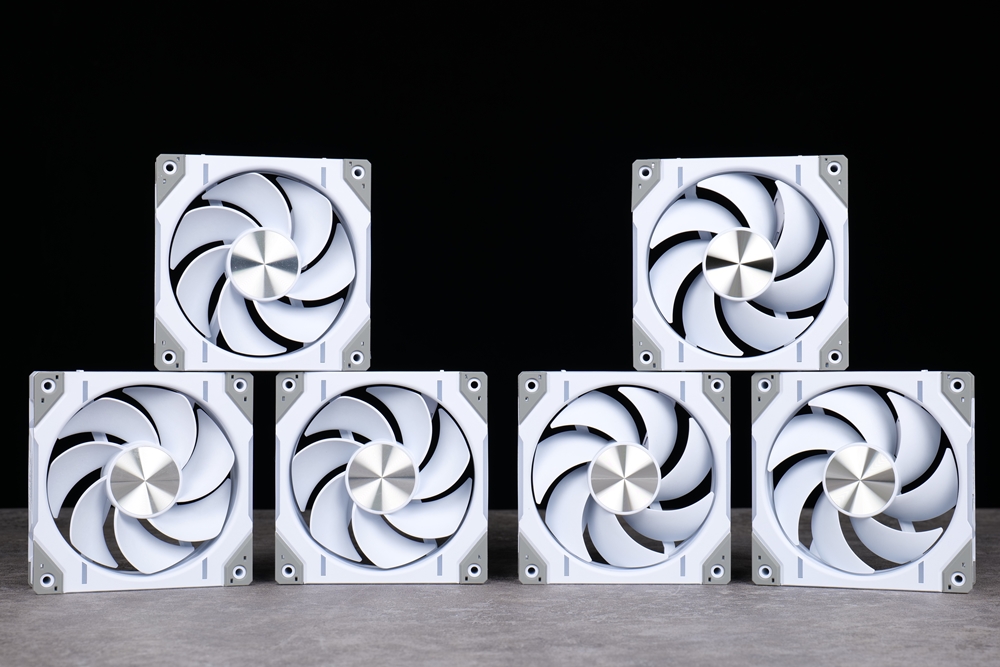
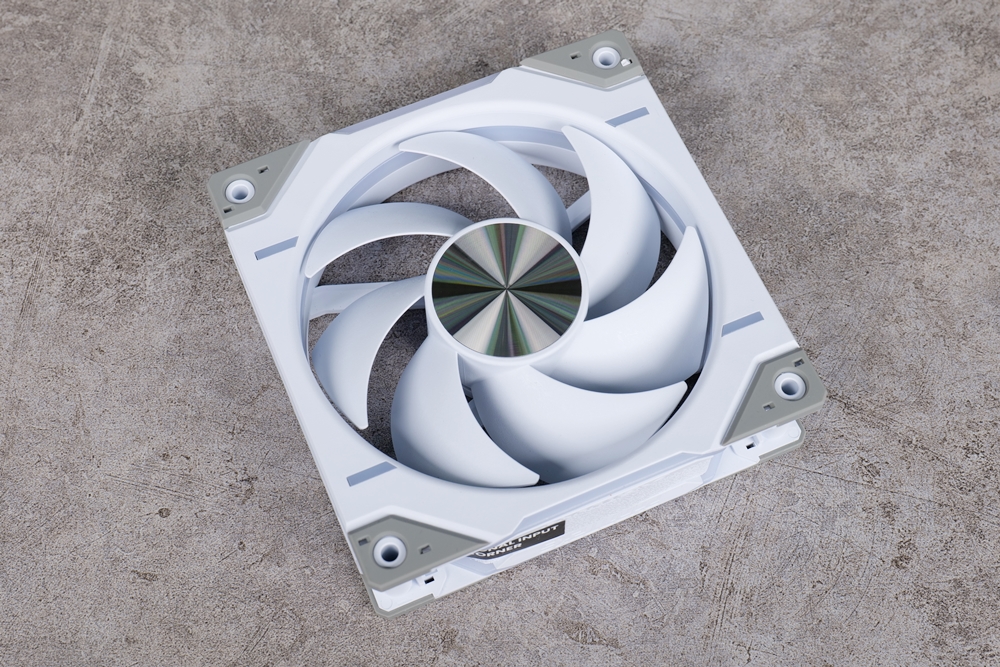
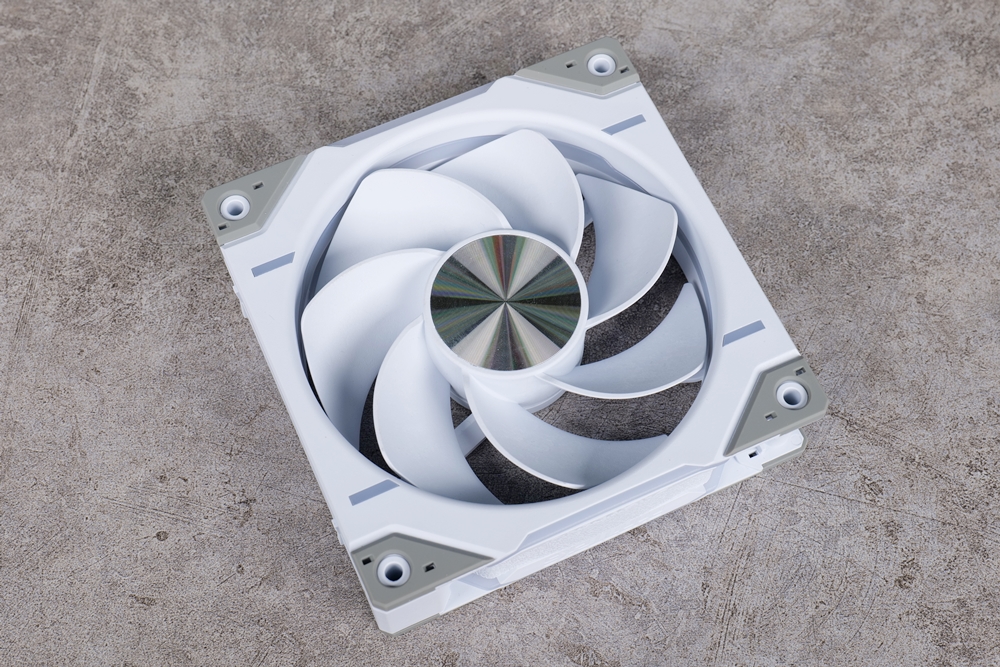
The frame of the fan incorporates a Halos light ring at its center, and the front, back, and sides are adorned with light strips. Once illuminated, it doesn’t display the typical circular light dynamics, but rather a horizontal flow. In my personal opinion, this unique visual effect makes for a rather striking display.
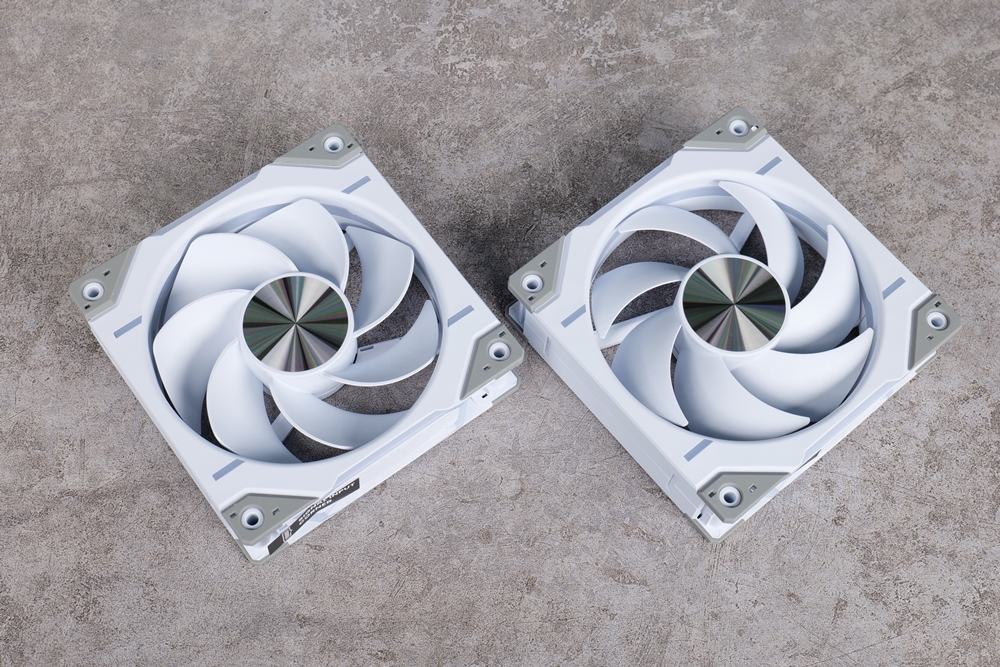
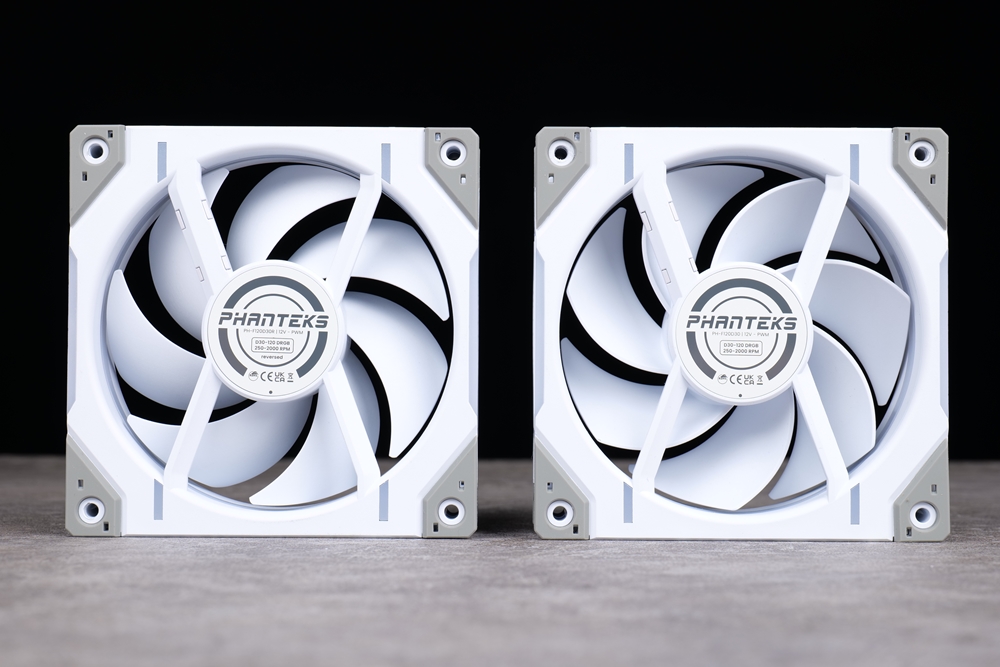
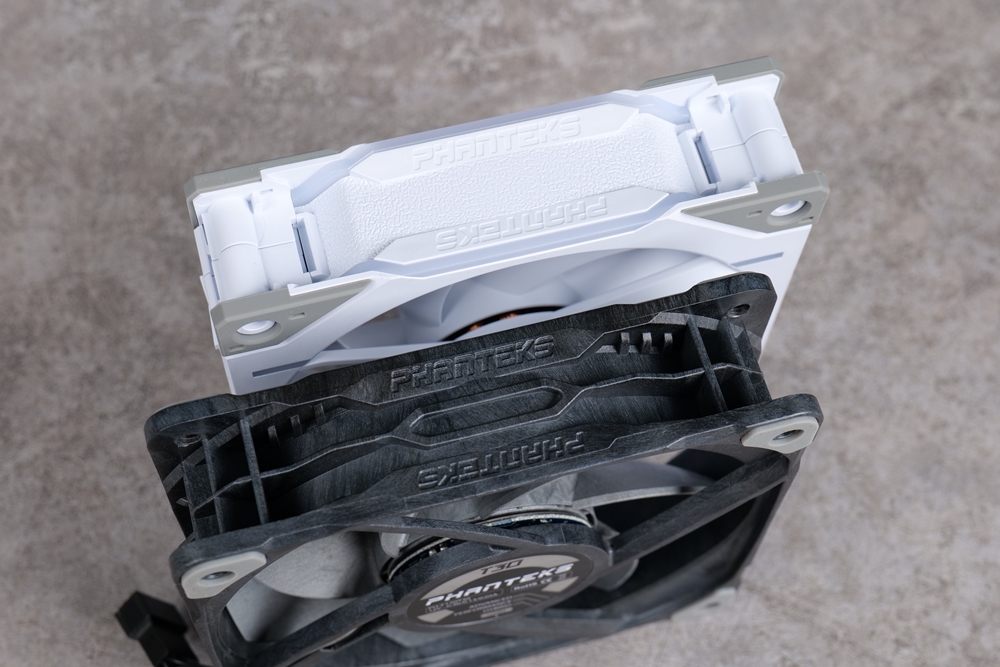
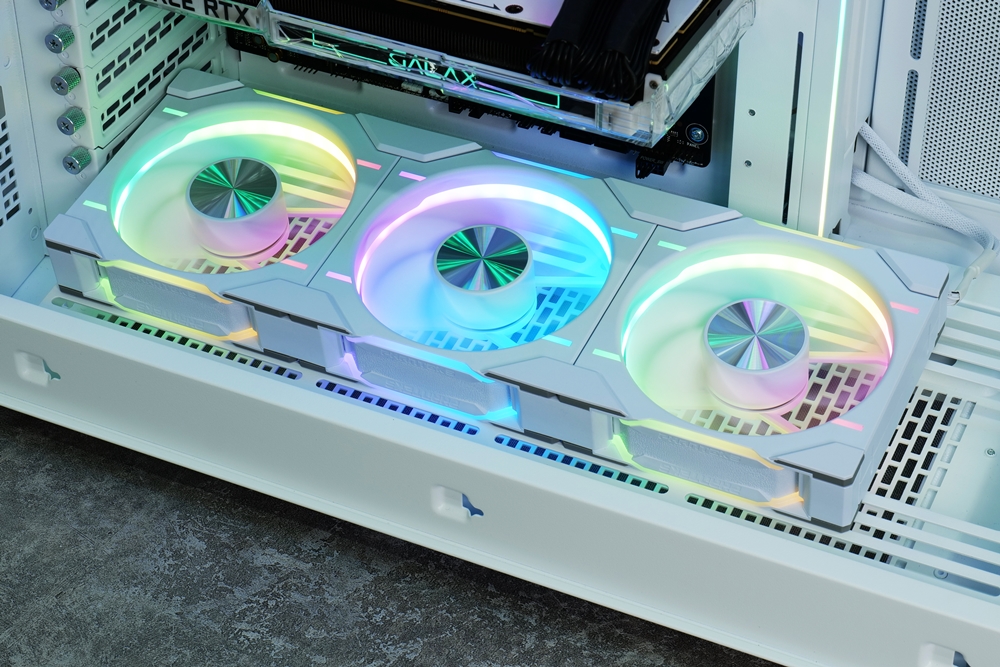
When it comes to assembly, the D30-120 employs a bridge connection design. During installation, there are fool-proof mortise and tenon structures on both sides of the fan, which assist in aligning the fan. On the other two sides, you will notice a metal contact point on one side that connects with a bridge between the two fans and a bridge clasp on the other side that doesn’t have a PCB. This allows two fans to be affixed together. Once the fan assembly is complete, the connector wire simply needs to be fixed to the buckle on the side with the sticker. This smart design enhances the ease of assembly.
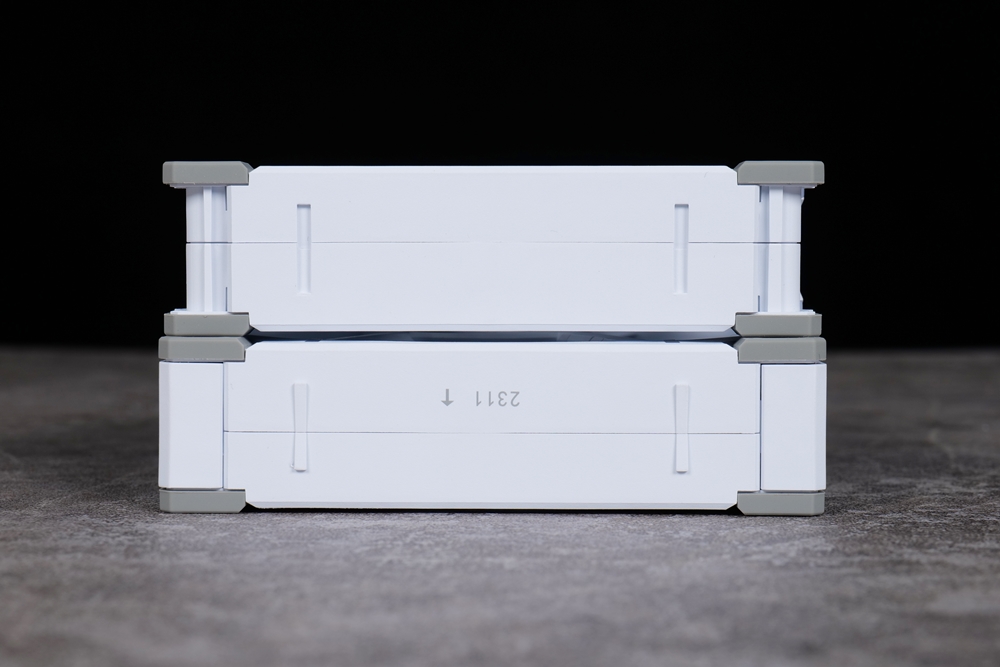
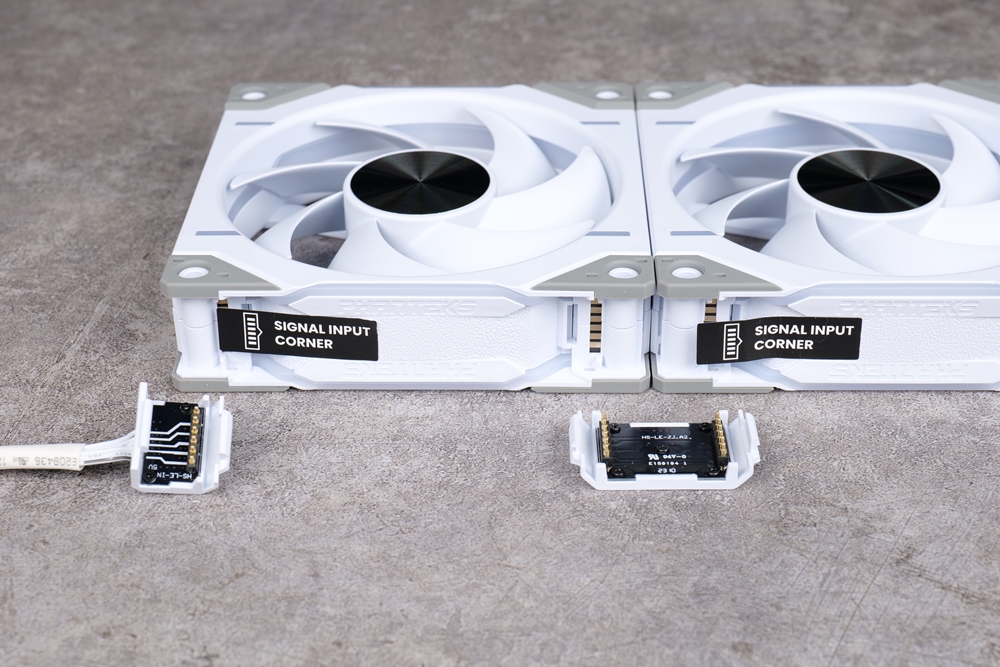
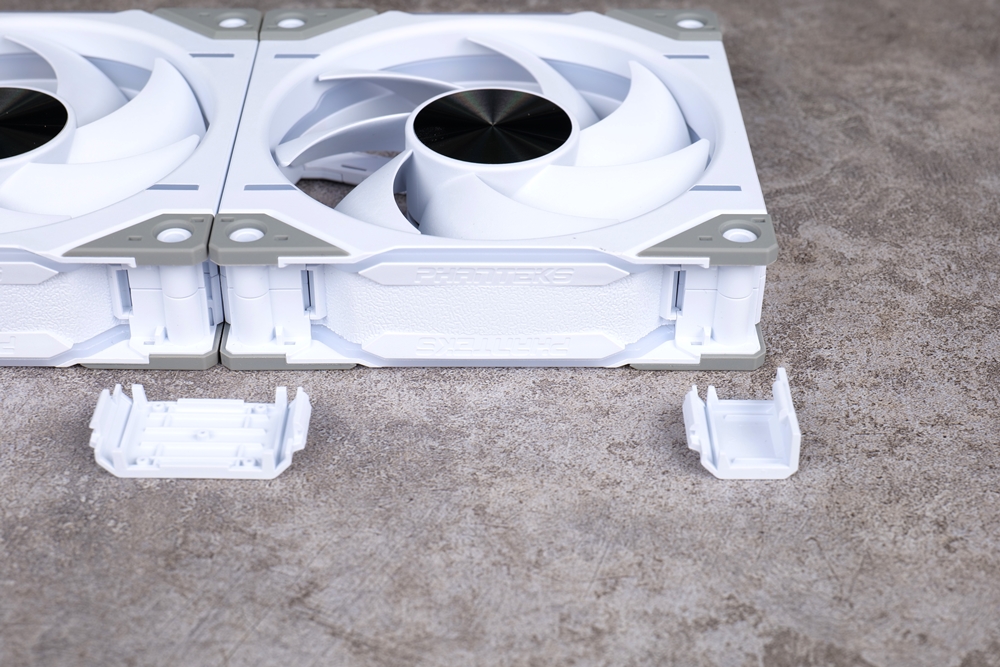
The fan accessories include additional screw cover plates. After mounting the fan onto the case or liquid cooling radiator, these cover plates can be used to conceal the rubber pads and screws. The hooks on these cover plates are designed to latch only onto the rubber pads, so unless something extraordinary happens, there’s no need to be concerned about the hooks breaking.
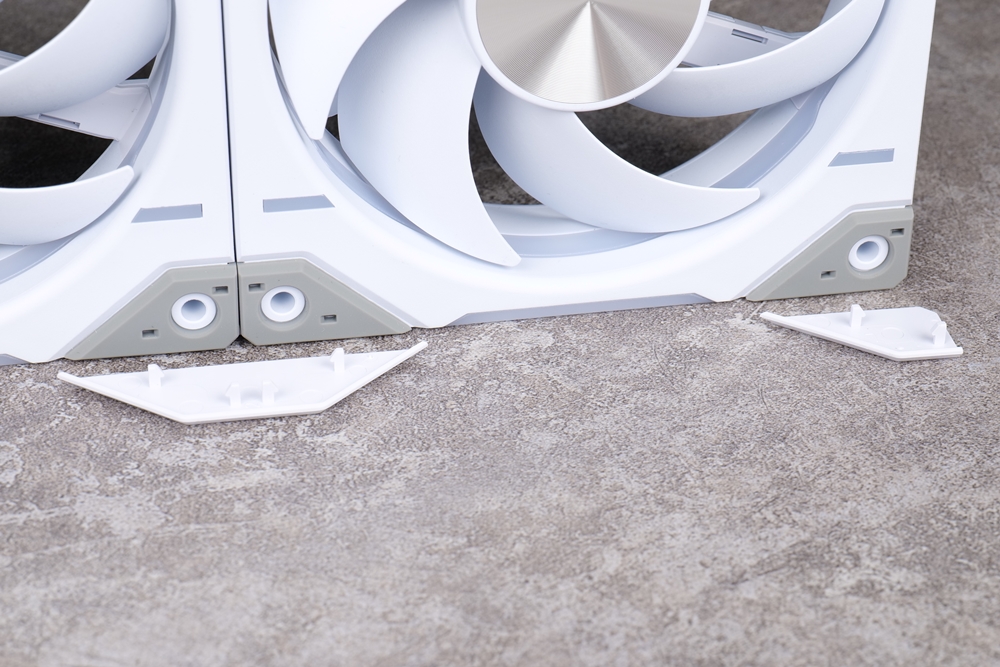
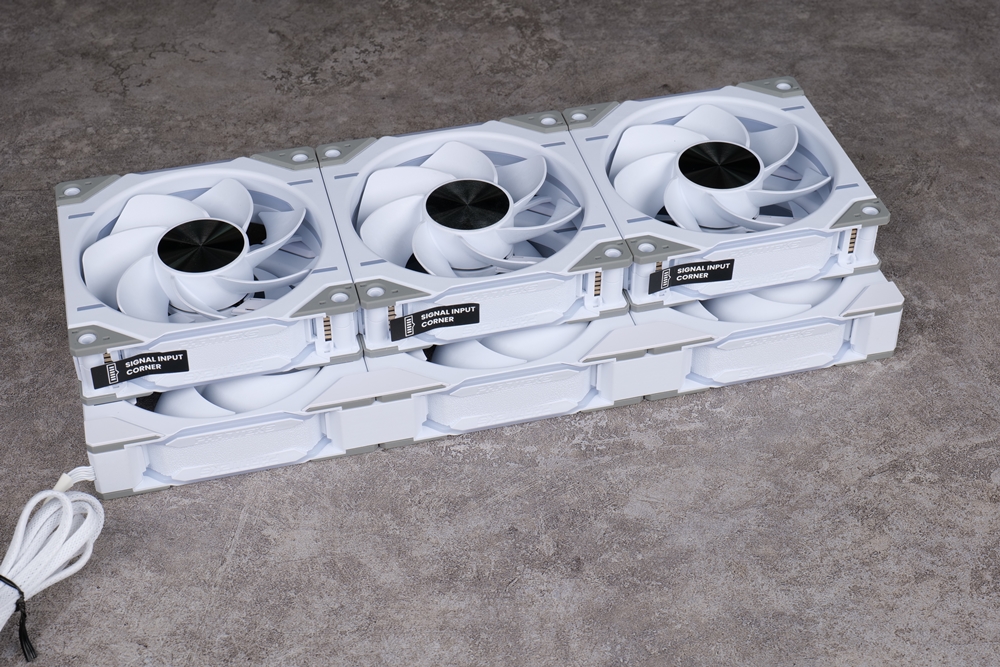
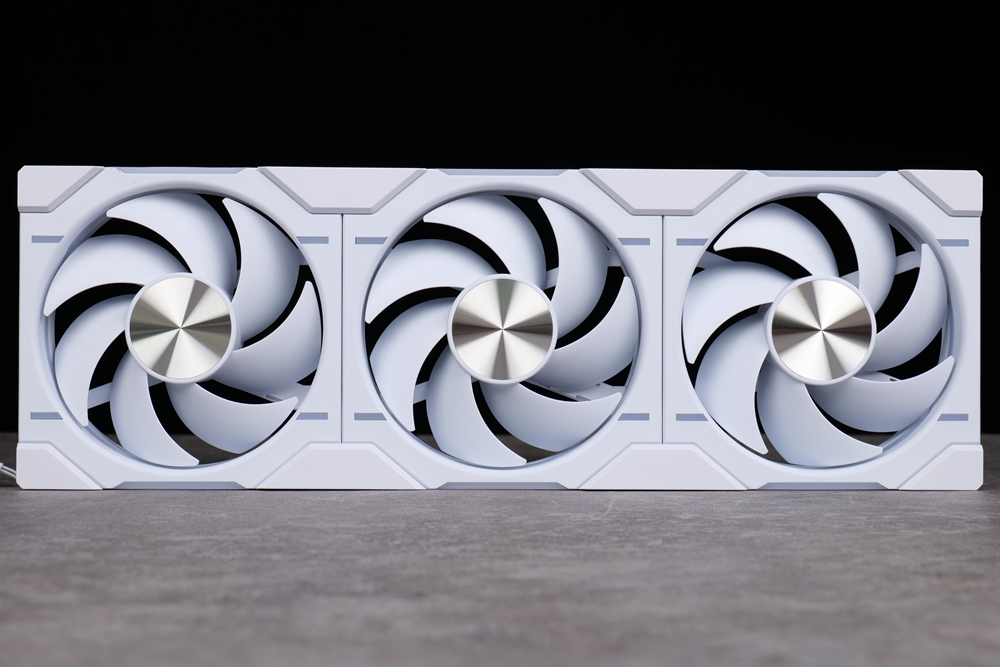
Included are three sets of wires for two kinds of connections – dedicated connector wires and light effect converter wires. The dedicated wires feature a buckle that attaches to the fan, and the connector wire consists of a 700mm 4-Pin PWM wire, along with a 600mm + 100mm daisy chain DRGB cable. In addition, there are two DRGB to 3-Pin conversion cables provided, making it easy for users to integrate with other ARGB devices and motherboards.
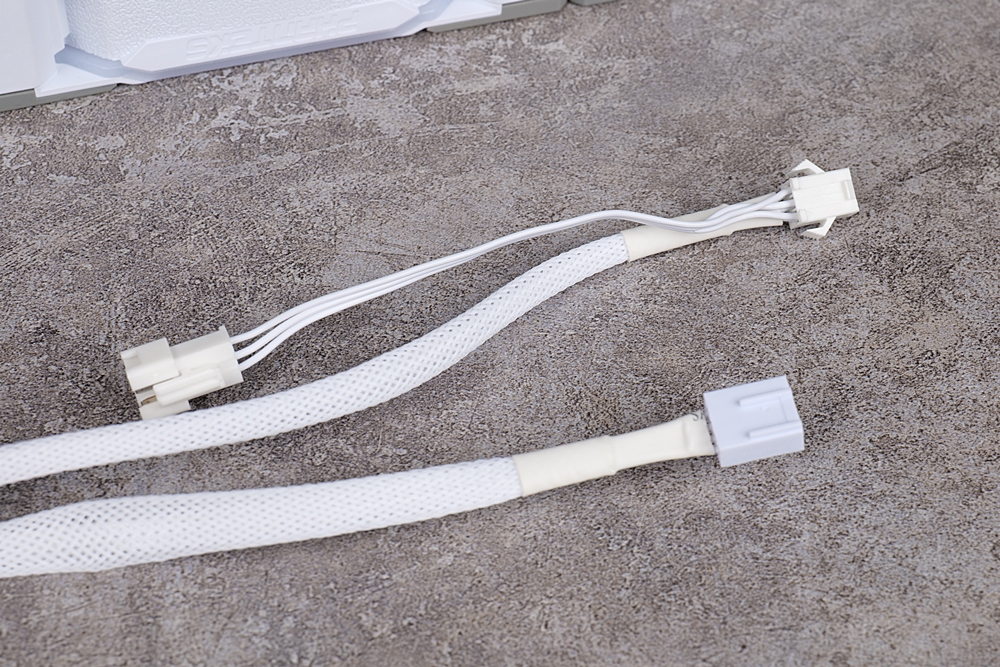
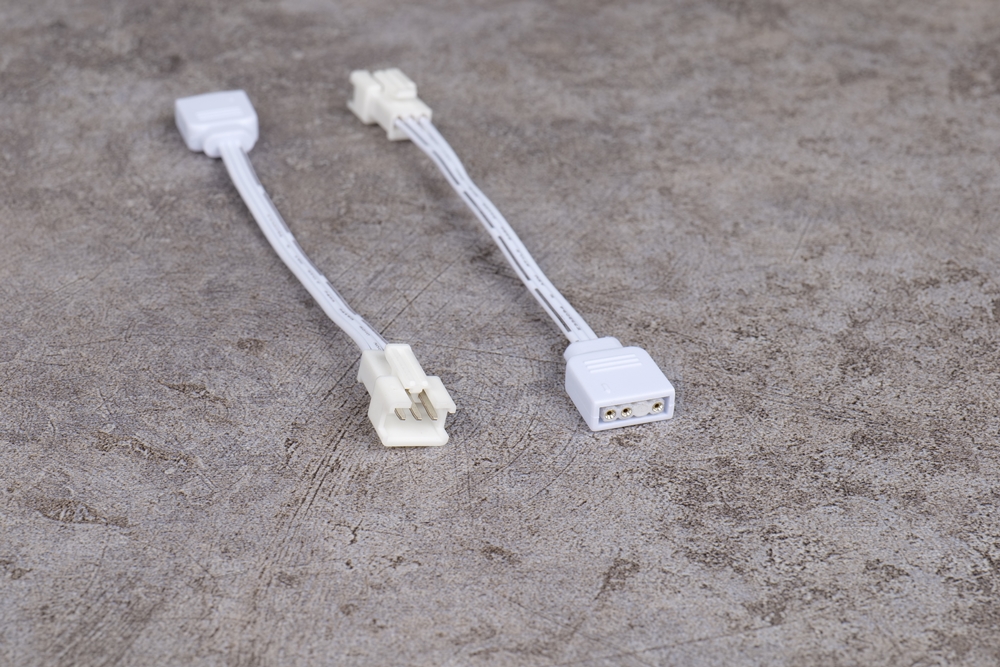
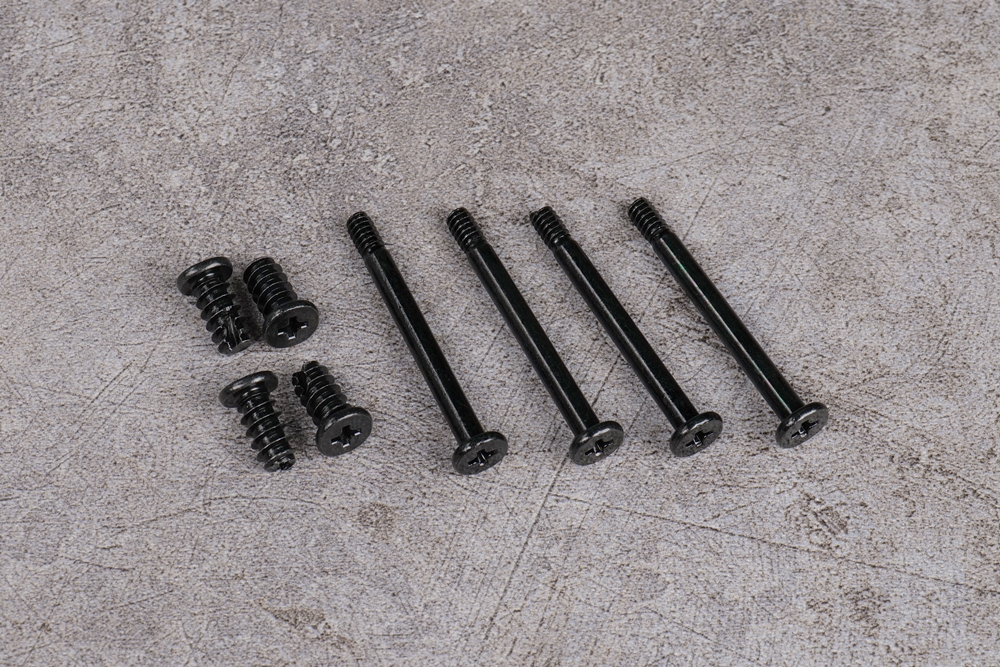
The D30-120 fan is available in two versions this time: conventional fan blades and reverse fan blades. This is mainly because, besides panoramic cases like the NV7, many larger mid-tower cases feature appropriate air intakes on the bottom and sides. For visual aesthetics, the reverse fan blades can be particularly useful. The design only reverses the fan blades, eliminating any concern about incorrectly installing the fan and thus obstructing the attractive lighting effect with the rear fan frame.
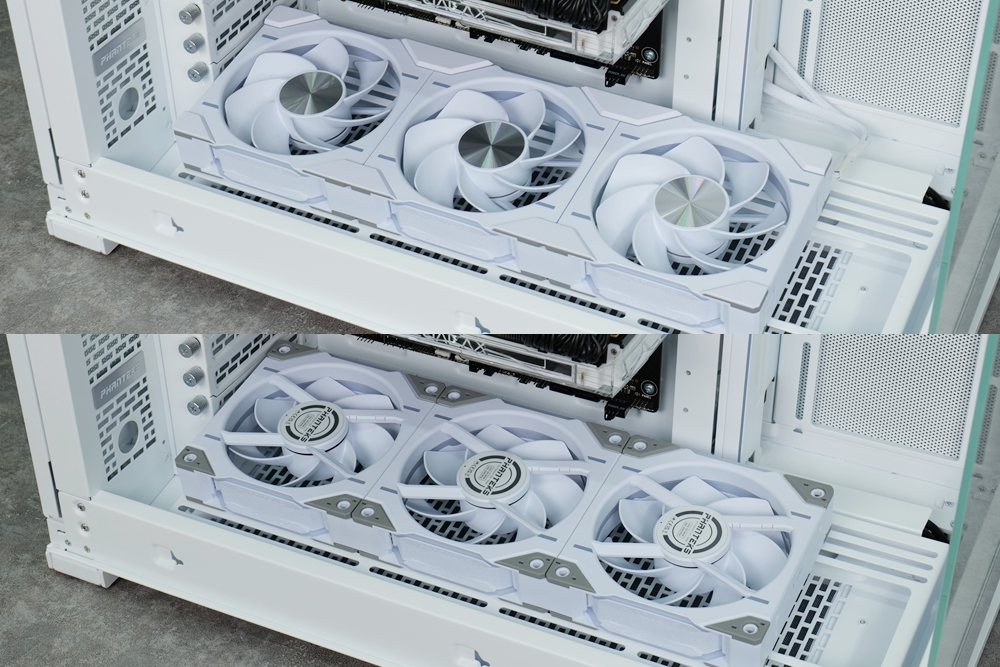
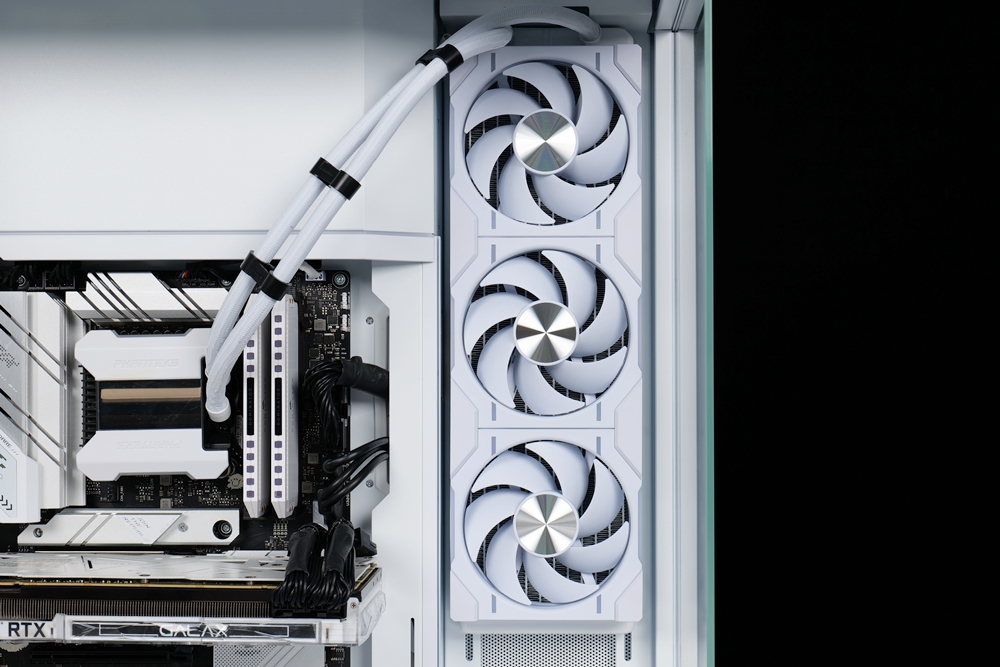
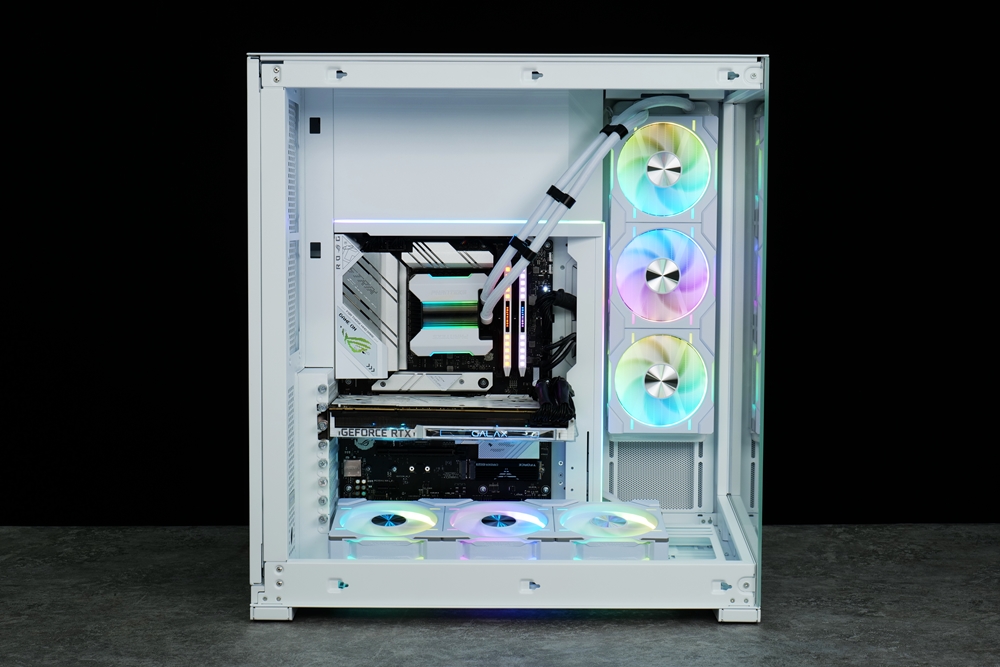
Heat dissipation performance measurement
In terms of cooling performance, the author compared the D30-120 fan with the T30-120 fan on a 360mm liquid cooling radiator. Given that the D30-120 fan has a maximum speed of 2000 rpm, and since the previous tests showed no significant improvement in cooling performance with the T30-120 fan at full speed on a slim liquid cooling radiator, the T30-120 fan was also set at 2000 rpm for this comparison.
The actual measurements revealed minimal differences in the cooling performance among all three options. However, the T30-120 fan at 2000 rpm still had a slight edge over the D30-120 fan in terms of both cooling performance and noise. Interestingly, the D30-120 fan, which isn’t solely focused on performance, whether it be the conventional or the reverse-blade version, still managed to deliver a performance comparable to that of a high-performance fan, which was unexpected.
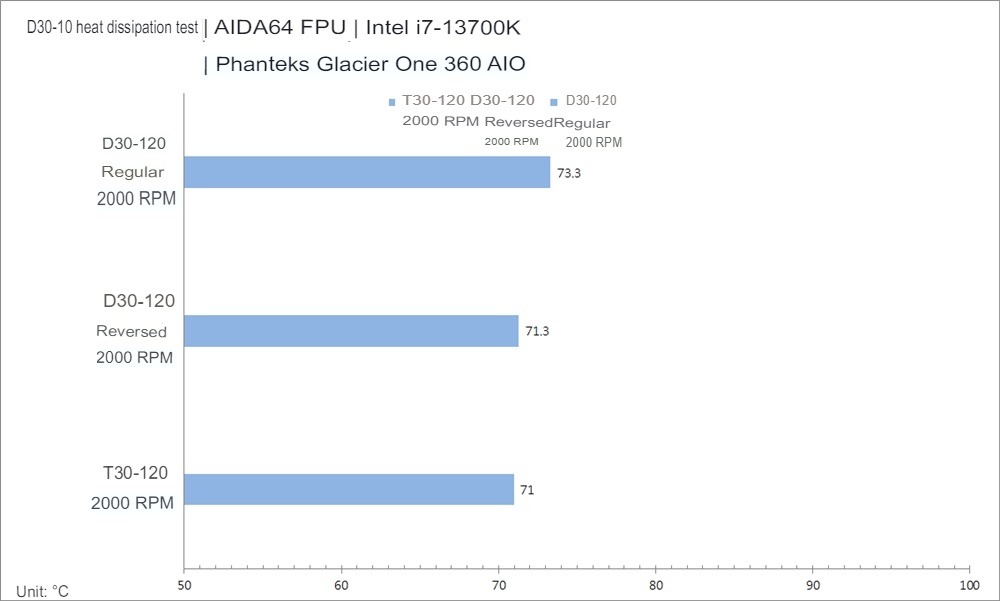
Test parameters
Processor: Intel Core i7-13700K
P-core clock: 5.0GHz
E-core clock: 4.0GHz
Voltage: 1.35v Power
consumption: 160w
Radiator: Phanteks Glacier One 360MPH
Summarize
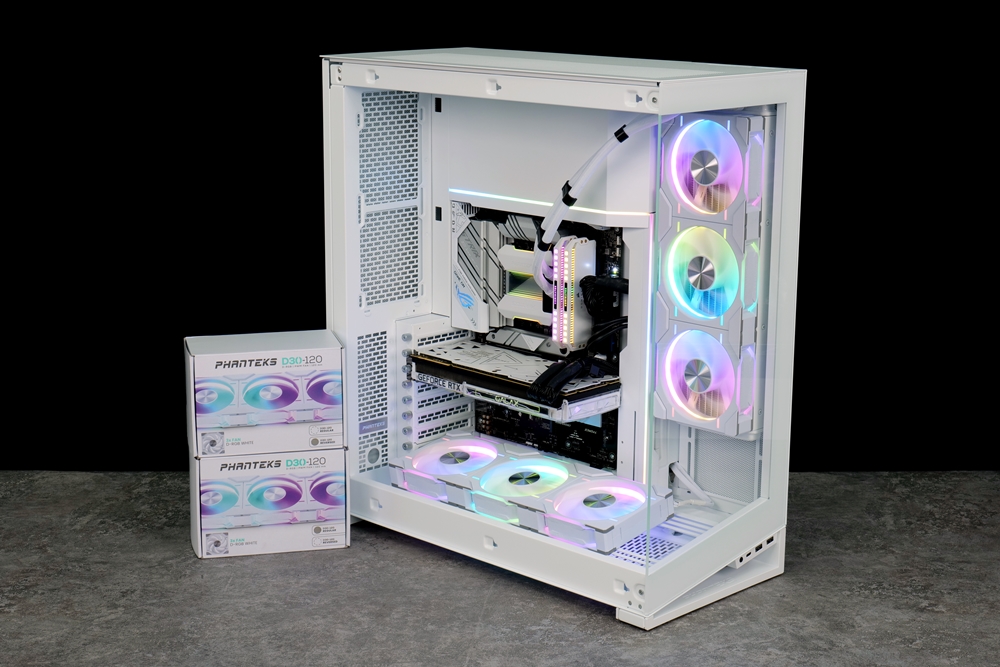
The newly launched D30-120 fan series by Phanteks utilizes the popular splicing design, providing commendable performance while also considering the lighting effect. After hands-on installation and actual measurements, it is indeed impressive how well the D30-120 series fans perform.
The D30-120 series fans aren’t limited to the three-piece white model unpacked this time. There are also single-piece and black versions available. Given that there are two versions – regular fan blades and reverse fan blades – there are a total of eight types of fans to choose from. The price of a single pack is 1090 yuan, and a three-pack is priced at 2790 yuan.
If this article is helpful for you, please share this article with your friends on social media. Thank you!
This article is based on the personality of the reviews. You are responsible for fact-checking if the contents are not facts or accurate.
Title: The Phanteks D30-120 fan offers two options for leaf orientation – front and reverse. It features a quick-release system and an integrated bridge design